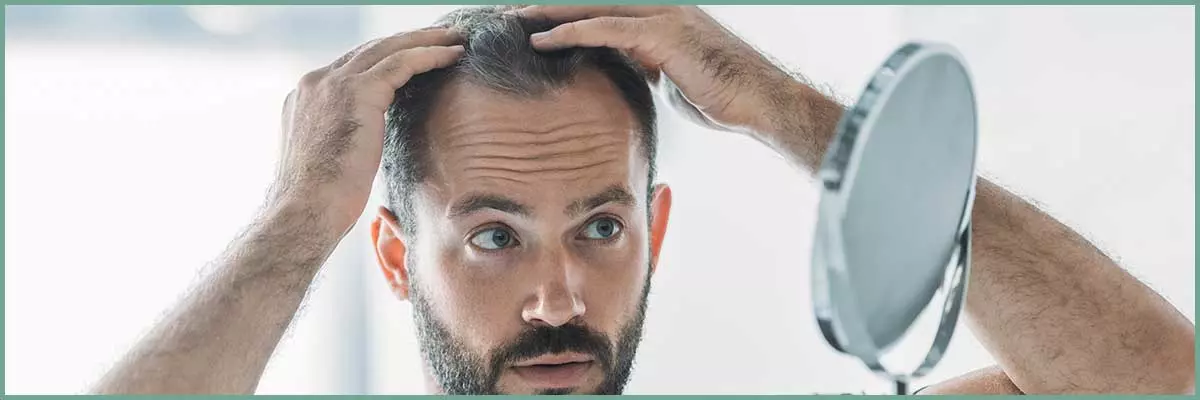Frequently Asked Questions
You have questions
Typically, you will want to know how long the procedure will take, where it will be performed, if and what kind of anesthesia will be used, when you will be able to resume your normal activities and the cost of surgery and financial arrangements. All of these concerns will be addressed during your consultation. Contact us for a FREE personal consultation.
When is the best time to consider this procedure?
Although there is no magic window of time to have the procedure, to achieve the best results which will appear normal for the rest of your life, you do not want to wait until your hair loss is widespread before beginning a hair restoration regime.
Where will my transplants come from?
There is a pattern to baldness. In men, that no matter how much hair they lost in the front, top, and crown areas of their heads, the sides and backs of their heads retain hair and sometimes a great deal of it. The sides and back are far less affected by the action of DHT (a form of testosterone) upon their hair follicles. In women, the hair usually thins in the part or crown of the head so the same areas are the donor sites from which the hair you donate to yourself is removed, along with the follicles and some surrounding tissue.
How is it transplanted?
The donated hair, hair follicles, surrounding tissue, and skin are called grafts, and each graft contains one or more hair follicles with accompanying hair, tissue, and skin. After removing the grafts, they are meticulously selected by hand and pulled into the holding chamber of the NeoGraft tool to be inserted into the balding, thinning areas. The tool makes a small hole in the scalp and injects the graft in the direction determined by the doctor.
Am I a candidate for transplantation?
The best candidates for hair transplants are those who have common male-pattern or female-pattern baldness, a genetic condition. Hair loss also can be caused by variety of factors, including thyroid abnormalities, iron deficiencies, and autoimmune diseases. Childbirth can cause hair loss as well. But the most common reason people lose their hair is heredity. And, contrary to common myth, the trait is not passed from your maternal grandfather. Nor does it skip a generation. The propensity is passed down from all your relatives. The best way to determine if you are a good candidate is a consultation with Dr. Hochman.
Do I need hair restoration?
If hair loss is caused by something that won’t last or can be treated, your hair is likely to grow back. For example, if an underactive thyroid is causing the problem, taking thyroid medicine may help. And most hair lost during chemotherapy, after childbirth or a serious illness will grow back after the treatment ends. For overall hair thinning, transplantation may not be the best course of action, but significant improvement can be achieved through our NeoLTS Light Therapy System with a series of treatments. Dr. Hochman can help you determine the best path to hair restoration.
What to expect at a consultation with Dr. Hochman.
First of all, he will want to know your expectations and how you would like the outcome to look. Your doctor will ask you some questions, like how much hair you’re losing, when it started, and whether your parents have hair loss. He will look closely at your scalp and hair loss pattern. He will ask about any medical issues or deficiencies which might be the cause of your hair loss. Then he will offer suggestions tailored to suit your needs and desires. You will also be advised of the time necessary for hair transplants to grow and how to care for the areas affected.
How much will it cost, and will insurance cover it?
The cost will be determined during your consultation because the price is based on number of follicles transplanted and the type of hair loss you exhibit. Dr. Hochman can only determine the cost after a thorough examination. Generally, most insurance does not cover our procedures.
We do have financing available through CareCredit which is a credit card for your health and beauty needs that lets you enjoy the benefits of living well today, with special healthcare financing options so you can pay monthly.
With special financing options for health, beauty and wellness, the CareCredit healthcare credit card helps make costly procedures and treatments more manageable with promotional financing options (Subject to credit approval. Minimum monthly payments required.)
For more information on cost read more
Will it hurt and how long does it take?
You will be given local anesthesia in both the harvest and the recipient areas, so there is minimal discomfort. In addition to local anesthesia we now offer the PRO-NOX™ option which is patient-controlled inhaled analgesia for in-office use and takes effect in seconds, offering immediate relief of pain and anxiety. You will be placed on your stomach in order to reach the donor area which is usually in the back of the scalp between the ears for approximately 2-3 hours. Then after a restroom/snack break, you will be seated upright for the implantation for approximately 2-4 hours. Without the need for stitches, downtime is shorter with fewer activity restrictions immediately after the procedure. “The highly ergonomic mechanical NeoGraft® system works as a natural extension of the surgeons’ hand, allowing for faster and more accurate harvesting of hair follicles.”
Will I have to shave or cut my hair short?
“No, not if your wear your hair long. If your donor hair is long enough, harvesting using the FUE/NeoGraft can be done by shaving small areas which can be covered by your other, existing hair. If you wear your hair short, it helps to shave it close for maximum yield. It looks more natural sooner as the transplanted grafts are short as well.”


